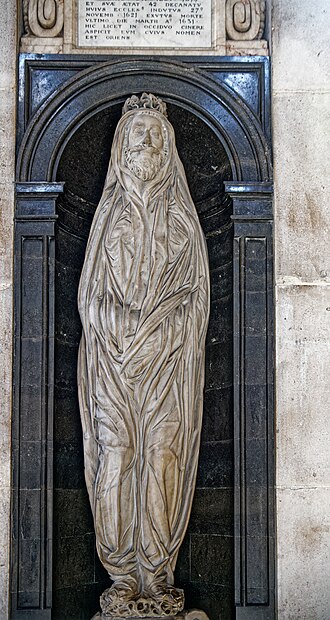
At midday each June 21, a shaft of light pierces the roof of a mausoleum in Brussels’ Laeken Cemetery and creates a heart of light.
It’s not clear whether this was deliberate. The tomb’s occupants, Louise Flignot and Léonce Evrard, died in 1916 and 1919, and the mausoleum was not built until 1920. Its designer, one Georges deLarabrie, is not known to have produced any other work, and the planning documents don’t mention the heart.
When Sir Lawrence Tanfield died in 1625, his wife composed this inscription for their joint monument at Burford in Oxfordshire:
Here shadows lie
Whilst earth is sadd,
Still hopes to die
To him she hadd.
In bliss is hee
Whom I loved best;
Thrice happy shee
With him to rest.
So shall I bee
With him I loved,
And he with mee
And both us blessed.
Love made me poet,
And this I writt;
My heart did do it,
And not my wit.
See Workaround, Reunion, and Early Arrival.







